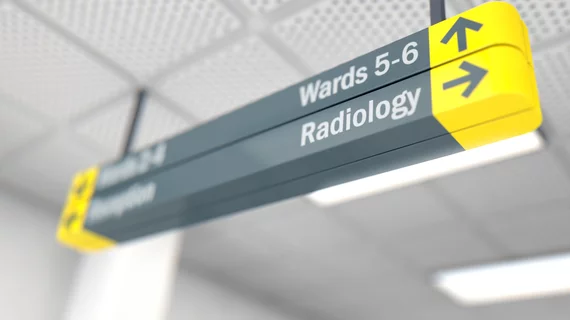Why do trainees lack interest in interventional radiology?
Interventional radiology (IR) is quickly evolving, but demand for sub-specialists far outweighs the supply. Authors of a new study published in Clinical Radiology sought to get a better picture of what young doctors think of IR.
“The aim of the present study was to survey foundation (internship) year trainees (FYs) to assess their perceptions of IR, and also to explore the means by which these perceptions could be addressed with the overall outcome of encouraging junior doctors to consider a career in this advancing sub-specialty,” wrote first author M. El Farargy, with Pennine Acute Hospitals NHS Trust in Manchester, UK, and colleagues.
In England, 45% of services are unable to readily offer IR access due to a shortage of interventional radiologists.
Pennine’s Department of Radiology created an anonymous survey which was answered by 79 FYs. Below are a few of the results:
- Seventy-five percent of FYs said they were not willing to consider a career in IR, about 11% were unsure about pursuing such a career.
- About 58% believe there is a significant shortage of interventional radiologists in the UK, another 37% were unsure.
- A total of 45% of respondents were introduced to IR throughout their training posts, 38% learned more through self-directed reading. Another 28% had heard of IR during medical school rotations. Slightly above 85% of FYs knew that ultrasound-guided biopsy was performed by IR, followed by vena cava (IVC) filter (81%) and nephrostomy insertions (72%).
- Among all FYs, 65% did not want to learn more about IR.
“The findings of the present survey are indicative of the poor general knowledge of FYs regarding IR, and highlights that IR is not introduced appropriately to undergraduates,” the researchers wrote.
Fixing the knowledge gap
The FYs were also asked to rate proposed methods for raising awareness of IR. Despite a majority not interested in learning more, the most preferred method was “elective placements and teaching throughout foundation years.” That was followed by lectures in medical schools and attending multidisciplinary team meetings.
“Interventional radiologists must take a leading role in the education of both undergraduate and junior doctors to address the apparent lack of interest in radiology of newly qualified doctors,” the authors added. “In addition, universities and societies should ensure that a basic level of general radiology and IR knowledge is obtained by medical students prior to graduation.”

